The Sequoia Flume
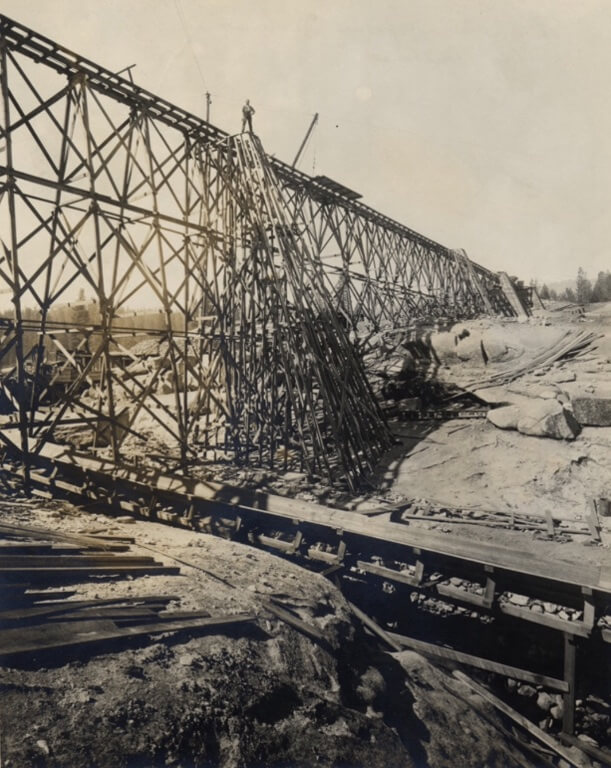
The Kings River Flume
Running from the high elevations of the Sierra Nevada Mountain Range of California down through the rocky canyons to the rail head in Sanger, the Kings River Flume was the largest of its kind in the world extending over 62 miles by the early 1900’s. Built in just over a year, this flume was a tremendous undertaking and an astounding feat of engineering.
Designed and built by the The Kings River Lumber Company in 1890, the flume and accompanying lumbering operation was a Herculean effort with a simple design. The trunks of the felled giant redwood trees were hauled down to the mill, cut into manageable boards of lumber and then floated down through miles of flume to the lumber yard in Sanger. However ingenious this process was, the effects on the giant redwood forest was devastating. It is estimated that the operation felled over 8,000 giant redwood trees, all over 2,000 years old. Of those trees felled, only 23% actually made it to the mill.

The history of the flume and its accompanying lumbering operation is not only a tale of relentless entrepreneurial spirit but is also a grim account of the ravaging of the giant redwood forests. Ironically, this story also tells of the numerous financial setbacks which ravaged the giant lumbering company.
The flume and lumbering operation left behind many fallen redwoods shattered and rotting on the forest floor, but one tree still remains in the midst of the fallen giants, the Boole Tree. This tall and majestic Sequoia still stands in Converse Basin. Located nearby, in an area now known as Grant Grove, is the General Grant Tree known nationwide as the “nation’s Christmas Tree”. This massive redwood tree is an awesome 267 feet with a 33 foot diameter at the base. The age of this tree is estimated at being 3,500 years old making it one of the oldest living things on earth.
History of the Flume
It all started when two lumber barons in San Francisco, Hiram T. Smith and Austin D. Moore, purchased 30,000 acres in California, in the high Sierra Nevada mountains, in an area known as Millwood. Over the next few decades, this would be the stage of one of the most challenging — albeit the most destructive — lumbering ventures in history.
Originally, Hiram Smith planned to build a railroad to carry the lumber from the mill near Converse Basin down to the Sanger lumber yard and Railroad Depot, but in light of the impossibly uncompromising terrain of the Kings Canyon, that idea was scrapped. Hiram then proposed to build a flume that would float the lumber down. In 1888, Smith and Moore founded the Kings River Lumber Company and in 1889, construction of the flume began. By mid 1890, the Kings River Flume was ready for operation.
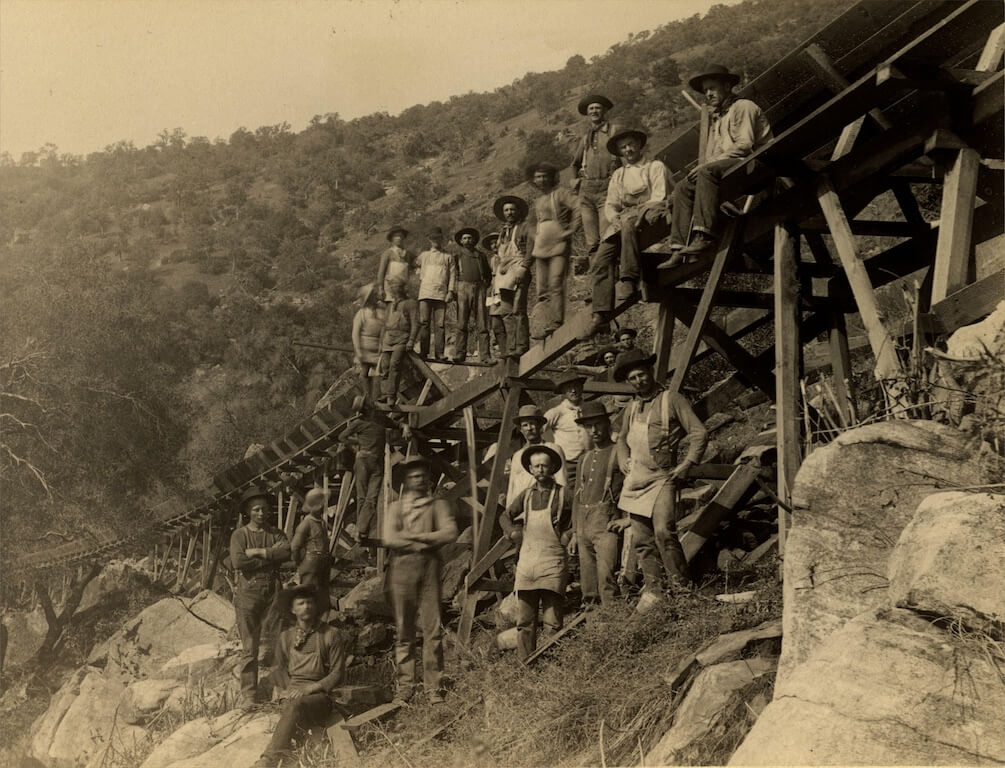
From 1890 to 1892, the Kings River lumber operation was in full swing. The Kings River Lumber Company employed 300 men in its deforesting operation and an extra 200 men in Sanger’ box factory, door and sash factory, planning mill and drying yard. Although the future looked bright for Smith and Moore and the Kings River Lumber Company, many financial woes were coming their way.
The massive Panic and Depression of 1892 hit the whole nation and the Kings River Lumber Company went bankrupt. After two years of negotiating loans, Smith & Moore reopened for business under the new name of the Sanger Lumber Company. Shortly afterwards in the summer of 1895, the creditors foreclosed, and in 1896 they shut down the lower mill and moved the lumbering operation to the heart of Converse Basin.
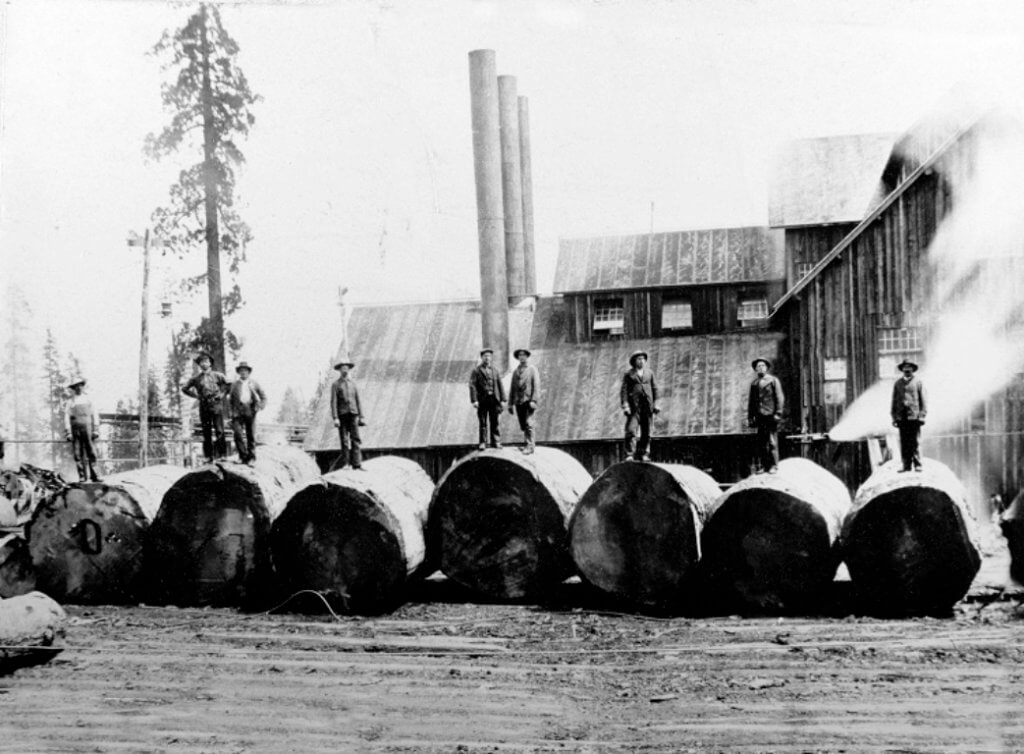
It was at this time that the most destructive lumbering took place. Giant redwood trees that stood for countless centuries were at the mercy of the lumbermen. The sheer weight of the giant trees caused them to shatter into millions of unusable pieces while the portions that were too large were blasted with black powder, but this method also proved unsatisfactory. It is estimated that the total amount of redwood cut in this period equaled to 191 Million board feet of lumber but only 1/5 of the total redwood trees fallen ever made it to the mill.
In the midst of a dwindling credit base, the Sanger Lumber Company was sold to an investors group in Michigan led by Thomas Hume in 1905. It was then renamed the Hume Bennett Lumber Company. John Eastwood of the Hume Bennett Lumber Company then built another reservoir (now known as Hume Lake), plus a new mill and extended the Kings River flume another 17 miles to reach the lake. In 1917, the company suffered another bankruptcy and was then renamed back to the Sanger Lumber Company.
The operation went on for nearly another decade being hit by a multitude of setbacks, the death of Thomas Hume, a fire that destroyed the mill and a massive forest fire which destroyed 7 miles of flume in 1926. Thomas Hume’s son, George, sold the physical equipment for $20,000 in 1927 and in 1935 sold a total of 20,000 acres including Converse Basin and the surrounding areas to the U.S. National Forest Service. This area is now part of the world famous Sequoia National Forest.
As a footnote, none of the lumber barons who took part in this venture during this whole period of history ever made a profit.
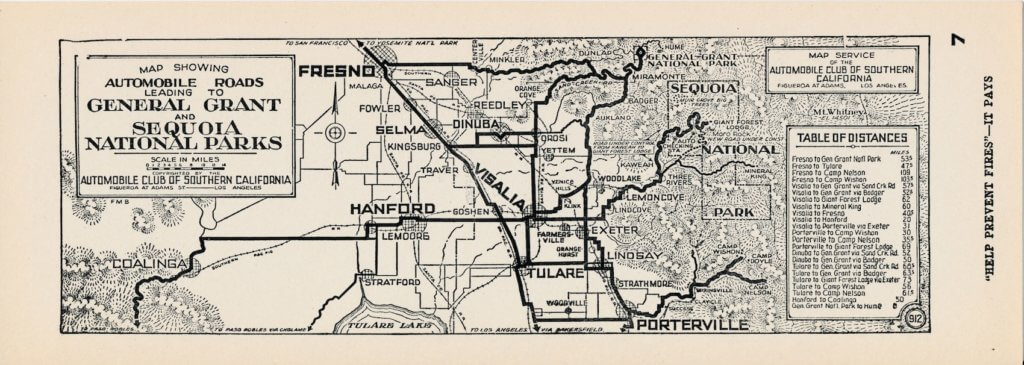
The Lumbering Operation
The Kings River Flume was a marvel of ingenuity. It spanned the deep rocky gorges and cliffs of Kings Canyon and was supported by numerous trestles. Two mills were constructed at Millwood for year round operation, one above the snow line named the Sequoia Mill and one below the snow line named the Abbott Mill. The huge trunks of felled Redwoods were hauled down to Millwood from Converse Basin first by teams of oxen, then by chutes, cable railroad and finally by a narrow gauge railroad connecting the various chutes. For this 2 mile long track, a gear driven locomotive was shipped to Sanger, dismantled, shipped up to the location and reassembled in the timber processing area for use.
A constant supply of water was made possible by the creation of the Sequoia Reservoir just a mile up from the Sequoia Mill. At the mills, the giant redwoods, firs and cedars were cut into manageable boards of lumber and sent down the flume for reception at the lumber yard in Sanger.
The operation of the flume was maintained by “flume herders” stationed at various locations along the flume’s route. These men were given the responsibility of ensuring the steady flow of lumber and water throughout the flume’s length from Millwood to Sanger. These men occasionally had to visually inspect the flume by boat, although this was considered extremely dangerous.
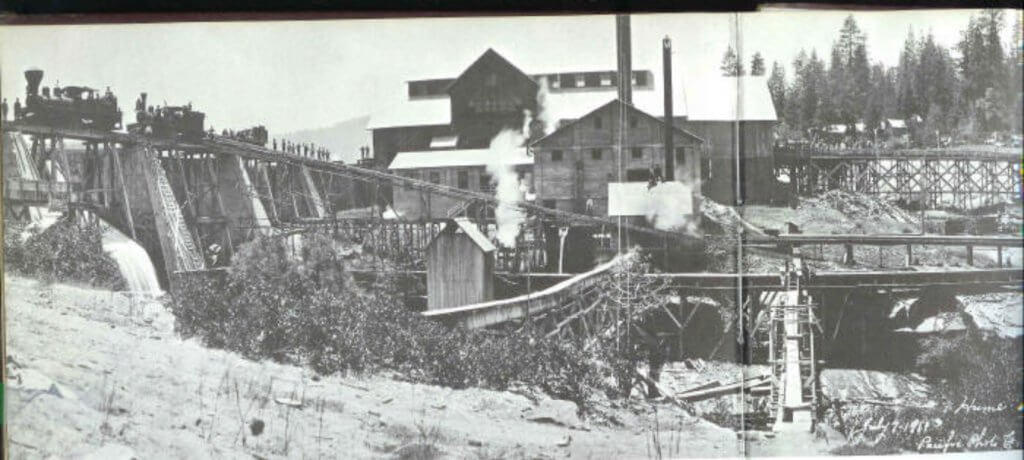
The operation was acquired by the Hume Bennett Lumber Company in 1905. At that time, the flume was extended an extra 17 miles and a dam was built further up into the mountains creating what is now Hume Lake. George Hume, son of the company’s owner Thomas Hume expanded the operation’s railway capacity.
This operation was designed for maximum productivity. Unfortunately, much of the timber that was felled was unusable since the sheer weight of the giant redwoods caused them to shatter. When the trunks were too large for shipping, holes were drilled with hand augers and filled with black powder. The results were just as devastating. Finally, a 90 foot circumference band saw replaced the blasting procedure, thereby eliminating much waste.
links
credit
Sanger Depot Museum
1770 7th St
Sanger, CA 93657






